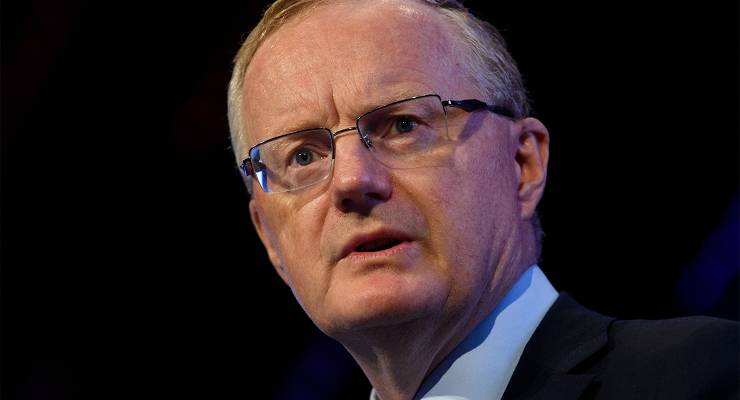
Did they crack out the champagne at the Reserve Bank (RBA) this week? The latest inflation number came in and it was mercifully low — the interest rate hikes unleashed on the Australian economy appear to be working.
As the next chart shows, the latest monthly figure was 6.8%, indicating that prices were, in February 2023, 6.8% higher than in February 2022, on average. That’s still a fast pace of price rises, of course. But it could be a lot worse, and over the past seven months, the annual rise has been worse.
The RBA has been looking for data that will tell it whether it needs to crank up rate rises again. The headline figure seems to suggest that it doesn’t. The current official cash rate of 3.85% is enough to bring inflation down. That’s certainly what the markets seem to think, with interest rate futures no longer pricing in a rate rise by the end of the year, and indeed pricing in a rate cut.
But the monthly figures tell a more complicated story. Yes, over the 12 months to February, prices rose less than over the 12 months to January. But in the actual month of February, prices rose by 0.6%. That’s hefty, and it’s why ANZ thinks the champagne would have stayed on ice at the RBA.
“[I]nflation momentum remains strong and is not slowing as much as the fall in annual inflation would suggest,” ANZ analysts wrote after Tuesday’s release.
What’s up?
The main source of trouble in the world of pricing is electricity prices. They continue to be far ahead of where they were in 2022. My power bill has certainly risen, astronomically, and I’m grateful for a cool summer that meant we didn’t need to run the air-conditioning very much.
Rent prices have risen 4.8%. There’s controversy there, because the Australian Bureau of Statistics (ABS) measures the total amount spent on rents, not just the price of newly advertised rents (which are up far more than 4.8%). We can expect rents to continue to rise as a component of CPI for a long time, as more and more renters sign new leases. This will spread the impact of recent inflation over a longer period, giving us a lower peak and a longer duration.
Meanwhile the price of communication (phone plans, etc) has fallen. This is an intriguing one because the figure is adjusted for changes in quality. Which is to say that the price of phone plans may not have risen quite as slowly as it seems, but what they include has gone up. You now get many more gigabytes of downloads, and the ABS gets busy adjusting the price of plans for the added offering. (Which is fair enough. They do the same in reverse if Cadbury shrinks the size of a block of chocolate, etc.)
New problems
What is rising in price? The answer has changed over time. It’s not about petrol so much anymore. For a while, that was really the biggest driver of inflation, as the next chart shows. But now a much broader group of things is rising in price. Electricity is foremost, with holiday travel a close second.
A return economy flight to the UK costs well over $2200 now, but if you book for later in the year, you’ll find tickets for $1600 or even less. Airlines are getting their planes back out of storage, hiring staff and putting far more flights back on. Competition is returning.
The upshot of all this data is that next Tuesday’s RBA meeting could still be “live”. Mortgage holders beware.








I’m admittedly no economist so this question might seem daft, but aren’t interest rate hikes an inherently regressive way to tame inflation? Most highly leveraged mortgage holders are not wealthy people so you’re squeezing a lot of low double income homes with kids who aren’t big spenders anyway. And the wealthy tend to have less debt, are able to absorb interest hikes on their debt without altering their spending, not to mention benefit from the increased interest on their savings.
The answer is yes.
And the reason why, is because those who designed the system, aka those in positions of power and influence, like it that way. It maintains the status quo.
Correct. There are some who benefit from squeezing young mortgage holders with children and they happen to be the holders of power. So until we can change that we will continue to screw the wrong people.
Another impossible graph to interpret. I almost guarantee there is someone in the office who is red/green colour blind – get them to do it.